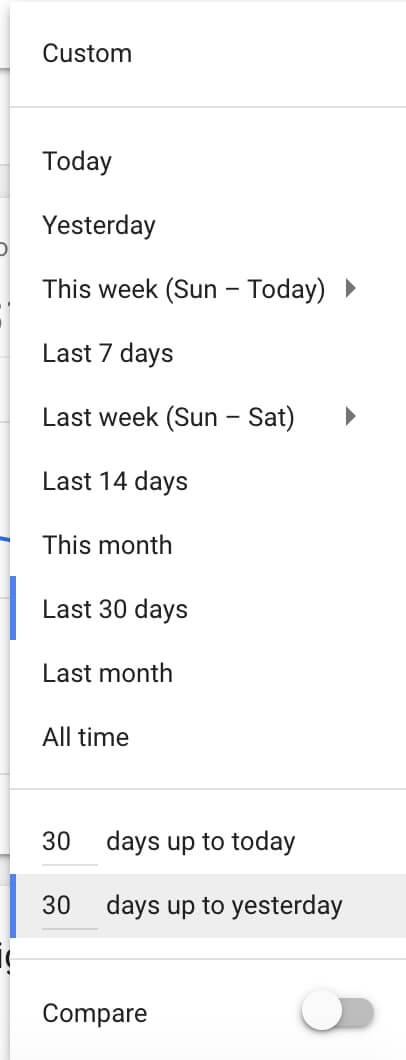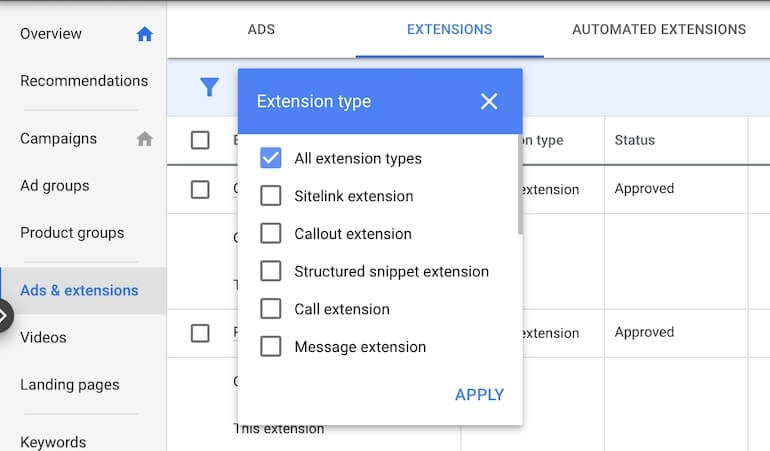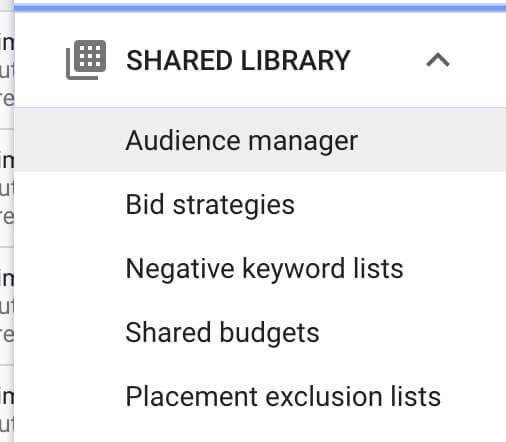11/12/2019
Your PPC account is never perfect. Hopefully, that doesn’t come as a surprise to you. The truth of the matter is that no matter how hard you work on building an account and optimizing it according to best practices, you will probably miss something. An even truer statement is that the longer you work in an account, the easier it is for things to slip past your ever-watchful eye.
In these situations, you need to take the time to audit your efforts, even if your account is performing well. Even periodically doing a quick 20-minute PPC audit can catch small issues before they become big issues.
What is a PPC account audit?
An account audit is a dive into your account to determine areas that could use further attention or work to improve performance. We’ll outline the actual process of the audit shortly.
When and why should I audit?
There’s never a bad time to audit your account because you’ll typically find something to help improve performance. However, you don’t particularly want to audit your account after a recent strategy change or account update. You could be auditing based on skewed information and nobody wants that.
The most important time to audit your account is if you’re having performance issues. It’s also a good idea to periodically audit an account if it has been managed by the same person or team for a long time.
Who should perform the audit?
This is a tricky question because it really depends. If there is a particular issue in the account that needs auditing, take the time yourself and dig into the areas that may be impacting performance.
However, if you’re talking about a more comprehensive check, it may be better to outsource the project and get fresh eyes. No matter how much you try to deny it, as an account manager you have a slight inability to look at something you uploaded and thought would work and say “Nope, not working, have to stop it.” And as we’ve already mentioned a couple of times, it’s very easy to overlook the “basics” and assume you have everything set up correctly or just skip stuff because there’s no way you’d set your campaign to target the Search and Display networks at the same time, right?
Where should you be looking?
Let’s get to the meat and potatoes of this guide, shall we? The following checklist outlines all the different account areas you can dive in to during an account audit and what kinds of items to look for.
The Basics of an Account Audit
Date Range
First things first as you need to make sure you’re looking at a long enough range of time to analyze relevant data. It doesn’t do you any good to look at 30-day’s worth of conversion data and to make changes based on solely that information. Odds are that data isn’t statistically relevant enough. At the very least, we like to observe at least 3-months’ worth of data. If we’re diagnosing a specific issue, a year’s worth of data is preferable when doing a general audit.

KPIs
Knowing the most important metrics to a client is the best way to ground your audit in success. If it’s an account you’re managing, we would imagine you have KPI’s picked out. It may be worth a quick check with your client to make sure you’re focusing correctly. Also, if you’re helping a fellow account manager whose account you don’t typically look at, determine the key metrics to dive in to.
Settings
This is usually one of our favorite areas of an account to audit because specific settings tend to be something that are set up when a campaign is started and then never looked at again. A big win in this area is if a campaign is targeting Search and Display traffic within one campaign, which we find more often than you may guess. From here you can also check out device bid modifiers, ad delivery method, ad rotation (optimizing for clicks when goals are based around conversions?), location/language targeting, and ad scheduling. Modifiers can sometimes impact performance more than expected. It’s worth double-checking to see if changes were made when performance came into question.
Account Structure
Campaigns
The first item to look at with campaigns is whether the naming structure makes sense and is easily understandable. Essentially, are the campaigns numbered 1-20 or do they have unique names that explain what kind of ad groups I’m going to find? As we talked about before, are the campaigns opted into the Search or Display network only? Are Interest Category or Topics campaigns broken out into their own campaigns or folded into a general Display campaign?
Reviewing campaign structure is where we start to determine if the rest of the account structure is going to follow a sensible method or if the remainder of the audit is going to require some Sherlock Holmes-style decoding on our part.
Ad Groups
Assuming the campaign structure is laid out in a regimented way, the next item to look at is how the ad groups are set up. For instance, if you’ve got general product categories as your campaigns, are the ad groups the subcategories for the main category? Does each ad group have a maximum of 20 keywords in it? You want to make sure you don’t have an ad group that’s too wide-reaching, as it will make ad copywriting to match the terms difficult.
Keywords
When auditing keywords, you want to review the match types. If most of the terms are broad match, some expansion for increased ROI could be completed by adding modified broad, phrase, and exact match terms. If the account is relying predominantly on broad match, is there a logical negative keyword strategy in place to weed out irrelevant traffic? Further, has broad modified match been implemented? Are bids set too high or low to produce results or maintain goals? Finally, we like to take a look at a search term report and see if some keywords that bring a lot of traffic or conversions to the account still need to be added to the account structure to increase profitable reach.

Ads
When looking at ads in any given account, keep the basics in mind at the front end. Are the ads grammatically correct or do they contain spelling errors? Are the ads taking advantage of the punctuation that is permitted by the engines (i.e. do they contain any exclamation points, registered/trademark symbols, etc.)? Are the ads promoting prices or offers that have expired? Is there a different message being illustrated depending on the stage of the buying cycle this ad is intended for? Finally, when was the last time an ad test was performed? Generally speaking, if there isn’t always an active ad test in an account, we try to determine why. No ad copy is perfect so something should always be tested to further enhance performance.
Quality Score
When it comes to Quality Score, you must realize what you may uncover here could take some time to correct. So, unlike settings or some structure issues, there isn’t a single way to begin correcting course. The most important part of this portion of the audit is to pull a few key reports and analyze them.
Historical quality score along with historical quality score factors are available in the interface. Download these segmented by time and you can easily analyze which factors are changing over time, and how they are impacting your quality score.

Extensions
Ad extensions are an important feature of the Google interface, however, they may not all be relevant to every vertical or business. Consider the account you’re looking at when auditing extensions and whether the extension would, in fact, bring anything to the table.
Sitelinks are fairly usable in all verticals, so check to see if those are implemented. If so, do they lead the searchers to more relevant information to the original product/service? Is there a brick and mortar location for the business? If there is, check if location extensions are in use. Is the account running call extensions? Do they have the call extensions turned on only during call center/office hours? Have call metrics been regularly analyzed along with the rest of the account?
Ad extensions are known to help increase click-through rates exponentially, so they are an important aspect of the account audit to pay attention to.

Networks
Hopefully back in the settings section, you already checked to see if individual campaigns were opted into either the Search or Display networks (not both at the same time). Now then, focus on the Display network segments. Are all placements running automatically or are some in the managed placements section? Are the managed placements hitting goals? Are there any auto placements that can/should be moved to managed? Are ill-performing placements being excluded? Have Interest Category and/or Topics-targeted campaigns running? Are there additional campaigns of this kind available? Is the account running image and responsive ads for Display? Are the image ads of varying sizes to fit many placement types?
Remarketing
First things first, are remarketing campaigns implemented? If there are, go to the shared library section of the account and look at the audiences that are set up for remarketing. Are they all collecting members? Is there an audience set up for each abandonment level? Can you find the cookie codes in the website code? Have all the cookies been set up with lengths that make sense?

Analytics
Not all accounts will have Analytics. Yes, this sounds crazy, but you first need to determine if there is an Analytics account (Google or otherwise) and if not, why not. Get one. It’s more than worth it. If there is an account, make sure it’s accurately attached to the paid search account. Has tracking code been placed on the website (ecommerce enabled, if applicable)? Are conversions or goals set up? Does the conversion data in Analytics match the engine interface (or at least close to it)? How are metrics performing (bounce rate, time on site, etc.)? Pull a site search report and see if there are new keyword opportunities to add to the paid search account. Have you looked through multi-channel funnels for any insights?

What happens after the audit?
Throughout your account audit, you likely compiled a list of items that need attention. The first thing you must do is prioritize your list. There are a few different ways to handle the priority piece depending on why you did the audit in the first place. If you had a specific issue, you want to implement what will begin righting the ship the fastest first, then move to the things you may have uncovered along the way that aren’t directly related to the problem.
Assuming you completed the audit for a more overall look into what might be a bit out of whack, then you should prioritize according to what’s going to affect your bottom line the most, or according to the amount of time it will take to complete the particular tasks. You also want to make sure you don’t make too many changes too quickly, as you may do more harm than good. For example, when negotiating a restructure of ad groups or overall campaigns, you want to not move too much too fast or you may shock your performance history and end up making things worse.
—-
Guide updated by Rachael Law (prior post date: 06/09/17)


